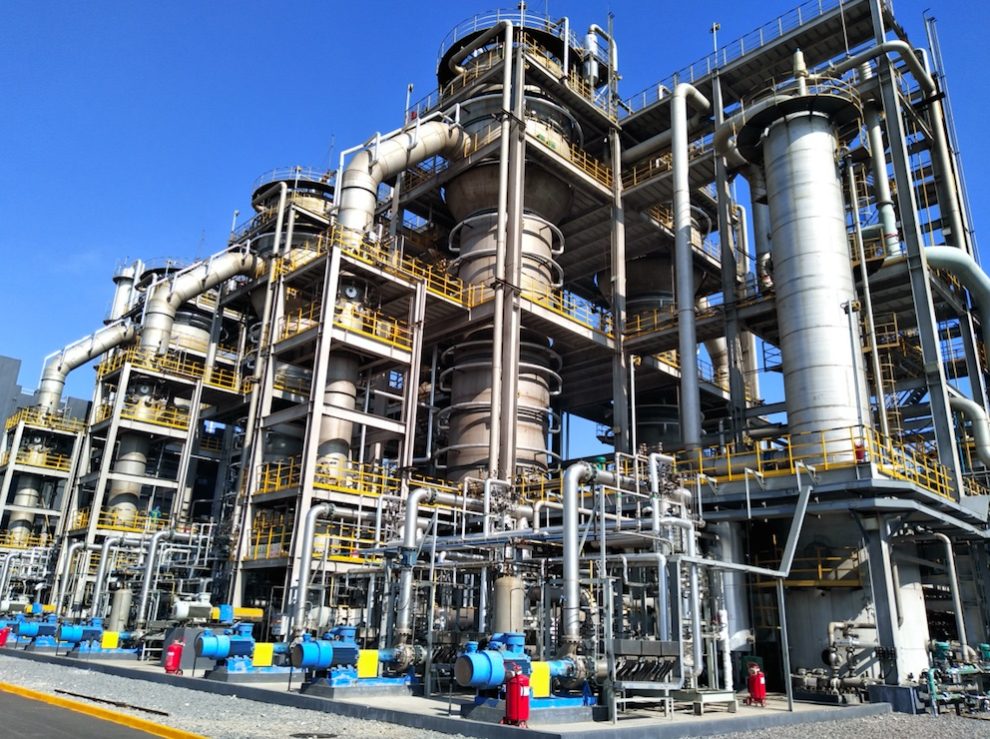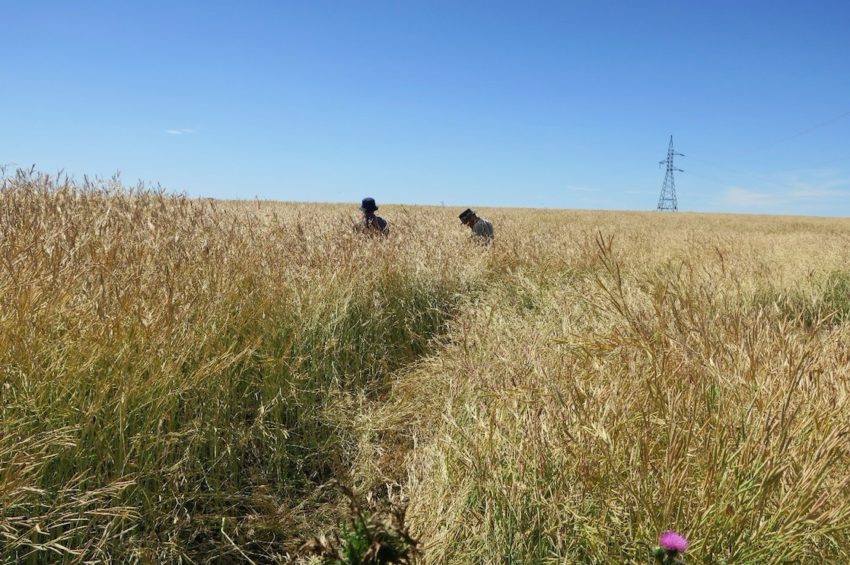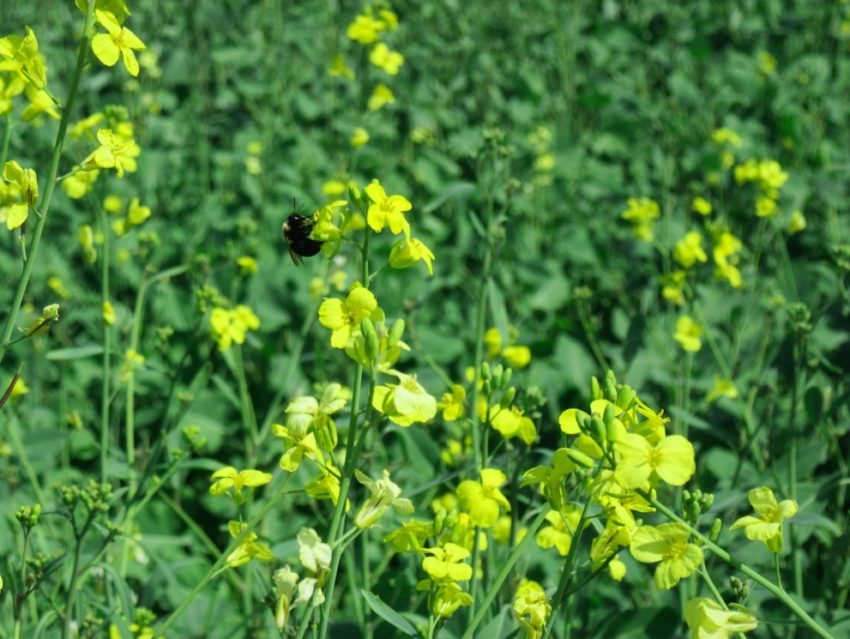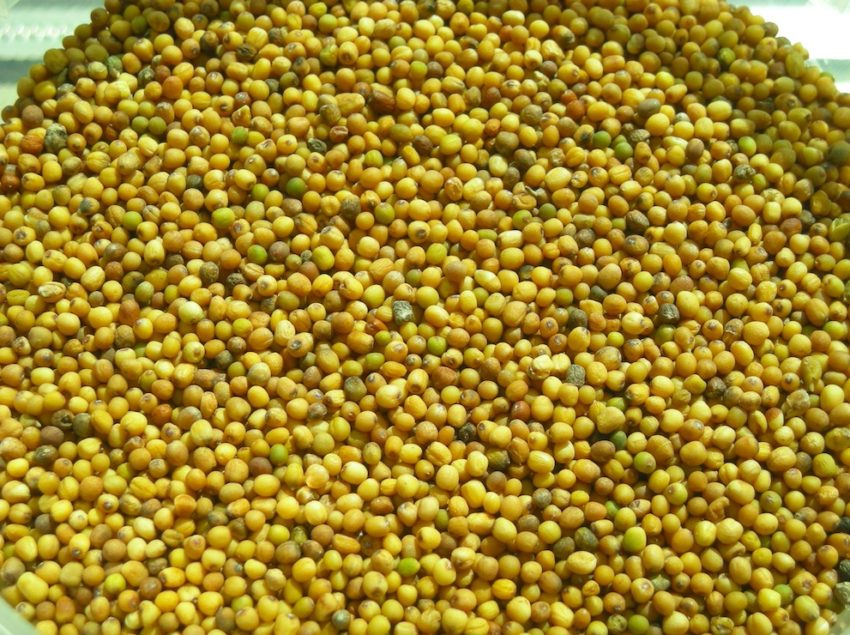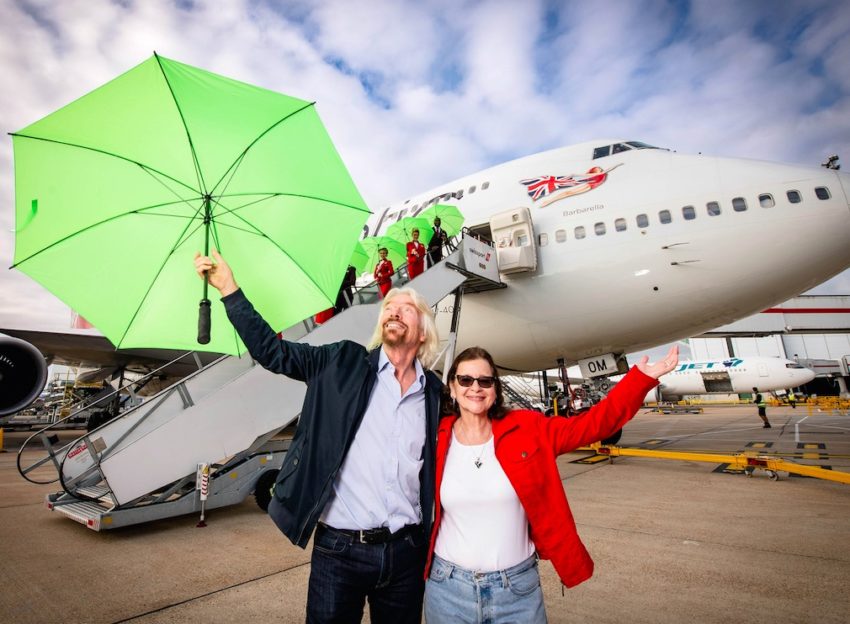As the true cost of climate change begins to emerge – from food insecurity and land degradation to conflict, rising sea levels and increasing inequality – the importance of the 13th SDG becomes ever clearer. Climate Action must underpin everything we do if we are to achieve the Sustainable Development Goals, launched in New York in 2015, to have a healthy planet. Strategies for climate action must involve the collective action of governments, companies, NGOs and the people, if we are to realise the two-degree scenario that will limit the most severe impacts.
Some solutions will be small in scale – decisions made at home or in offices to reduce consumption can have a significant impact – but others will represent major paradigm shifts in patterns of production, consumption and resource management. The shift to a global bioeconomy has the potential to radically reduce our reliance on fossil resources, which emit greenhouse gases, through the development, production and use of biological and other advanced products and processes[1]; this is one such sea change we are undergoing.
A bioeconomy could be a silver bullet for the global war on climate change – helping nations, big business and local producers to have a hand in achieving the targets on Climate Action, set out in SDG 13. While traditionally associated with fuel, the bioeconomy offers solutions for sectors including textiles, fibers, plastics, cosmetics and more. The growth of this bio-based, low carbon economy has been gaining momentum, and in 2013 was worth €2.1 trillion, employing 18.3 million people, in the European Union alone.[2] The average annual growth of the bioplastics market is predicted at 29.3% between 2016 and 2020[3], while the value of the alternative aviation fuels market is set to hit $246.52 billion by 2024, a 46% increase in just 8 years.[4]
Whether this growth has been – or will be – coupled with a radical reduction in greenhouse gas emissions is yet to be seen. While the shift to a bioeconomy could be a major pillar of climate action, the reality is that the promised climate impact reduction does not automatically materialise, and importantly not all bio-based solutions are created equal.
Many of us are aware of the debate that started in the early 2000s around the use of bio-based fuels, and the significant controversy that has surrounded some aspects of the bioeconomy. These debates are crucial to driving the development of transformative solutions – not just for the climate but for the broader social and environmental landscape. Thus, discussions of potential climate benefits, direct and indirect land use change, food security and more can only benefit the development of truly sustainable fuels.
 In The Photo: RSB delegates vote on important to updates to the Standard. Photo Credit: RSB.
In The Photo: RSB delegates vote on important to updates to the Standard. Photo Credit: RSB.
The impact that the bioeconomy will have in future decades cannot be overstated. Some industries simply do not have the option to switch to less polluting alternatives, such as electric, without huge technological advancements across a timeframe of decades. In the meantime, if they are to reduce their climate impacts – and they must – these industries will increasingly rely on the bioeconomy to provide solutions which can lower their emissions radically and immediately. Supporting SDG 13, some fuels can demonstrate up to 80% emissions reductions over their lifecycle[5] – and these are the fuels of the future.
These remarkable savings are made possible by technological advancements in the way we use feedstocks and the types of feedstocks available. Some feedstocks, such as forestry residues, straw waste, carinata and even recycled carbon, can be converted into fuels, energy and other products, positively impacting climate action in many instances. Significant greenhouse gas emissions can be demonstrated under the correct conditions, and with careful management of impacts throughout the lifecycle.
As the development of the bioeconomy, driven by technological advancements, sees producers turn new and novel feedstocks into fuels and products, ensuring this evolution is accompanied by a commitment to true sustainability and real, measurable impacts will be key.
Taking a holistic approach to the sustainability of the bioeconomy can have a remarkable impact. By ensuring producers, processors and end-users are empowered to innovate and manage the risks and realities involved, we can develop a bioeconomy which not only ensures real climate action, but supports many, if not all, of the SDGs.
Such an approach already exists in the form of the Roundtable on Sustainable Biomaterials (RSB). The RSB Standard describes how to produce advanced fuels (and other bio-based or advanced feedstocks and biomass-derived materials, as well as novel products) in a truly sustainable way – ensuring a real reduction in greenhouse gas emissions while supporting community development and biodiversity; this also supports environmental and social sustainability for generations to come. This Standard is the product of a multi-stakeholder process which has involved producers, end-users, academics, environmental and social NGOs, governments and other organisations – and is considered the most robust and trusted sustainability approach for the bioeconomy available anywhere.
Example Case Study 1: Agrisoma Grows Cleaner Fuel – and Ensures Food Security
Agrisoma, a Quebec, Canada headquartered global business, has commercialised Carinata, an RSB-certified mustard-like oilseed that is a combination of canola and mustard; this is used to make biojet and diesel fuels and sustainably produced, non-GMO animal feed.
Carinata is a new crop, grown in rotation with other crops, which provides benefits on the farm through its reduction of erosion, and the return of carbon and other organic matter back to the soil. Carinata is a non-GMO seed-producing crop containing high levels of oil and protein. When grown, Carinata produces a significant amount of biomass which is returned to the soil, only the seed is collected, which is half oil and half protein.
 In The Photo: Carinata winter crop ready to harvest. Photo Credit: Agrisoma.
In The Photo: Carinata winter crop ready to harvest. Photo Credit: Agrisoma.
The chemical composition of the oil makes it particularly well-suited to being refined into diesel and jet fuel. Not only does Carinata based fuel provide a GHG reduction, but the protein contained in Carinata seeds is a high-quality protein which is approved for use in the animal feed industry. Carinata is only one of a handful of high protein, sustainably produced, non-GMO animal feed products.
Carinata is now commercially grown in the USA and South America, and is now being introduced into Australia and Europe as a new crop rotation option, targeting the winter season when food crops are not typically grown. Carinata offers a win-win-win situation: for the environment, for the world’s food supply and for farmers.
 In The Photo: Carinata in flower with visiting honey bee. Photo Credit: Agrisoma.
In The Photo: Carinata in flower with visiting honey bee. Photo Credit: Agrisoma.
In 2018, Biojet, made from Carinata, powered not only the trans-Pacific Qantas Flight 96 from Los Angeles to Melbourne, but also United Airlines trans-Atlantic Flight 44 from San Francisco to Zurich, both on fuel efficient Boeing 787s; this made these flights the lowest GHG footprint for global transportation. More than 20 million litres of Carinata based diesel fuels have been produced, providing significant GHG reductions.
Agrisoma is focused on the farm, seeking to add to the overall food supply (SDG 2) with the Carinata animal feed product, and reduce GHGs (SDG 13) globally by using Carinata oil in the advanced biofuel supply. The mission of Agrisoma is to empower the farmer to feed and fuel the planet (SDG 7) without taking away current food production, or impacting land use (SDG 15). Agrisoma believes in the power of agriculture to create sustainable food and energy.
 In The Photo: Carinata Seed. Photo Credit: Agrisoma.
In The Photo: Carinata Seed. Photo Credit: Agrisoma.
Not only do producers, processors and end-users who commit to using only truly sustainable alternative fuels, as certified by RSB, have a tangible impact on climate change and SDG13 – by demonstrating a 50% greenhouse gas emissions reduction as a minimum – they are also playing their part in achieving other Sustainable Development Goals. Most obviously, Goal 7’s Affordable and Clean Energy is supported by the development of new and sustainable fuels.
Additionally, bioeconomy stakeholders across the supply chain, who adhere to RSB’s 12 Principles and Criteria for sustainability, are supporting:
- SDG 6 (Clean Water and Sanitation) by implementing RSB’s most rigorous approach to water (as rated by WWF[6]);
- SDG 1 (No Poverty) by ensuring all production and processing in regions of poverty is tied to meaningful community development, labour rights, food security, and rural and social development;
- SDG 15 (Life on Land) by requiring a rigorous approach to soil conservation, biodiversity and land rights.
In fact, every SDG is supported to a varying degree by the Principles of RSB’s most robust, rigorous and trusted sustainability Standard.
Positive impacts can go well beyond fuel too; by changing the way we produce, process and use resources, sectors like plastics, textiles, chemicals, cosmetics and more, can all share a role in reducing climate impacts and support social and environmental sustainability if they are compliant with the RSB Standard for Advanced Products.
Example Case Study 2: Giving Carbon a Second Lease on Life with Lanzatech
LanzaTech captures carbon rich waste streams before they are emitted into the atmosphere, and converts them into a range of products. These waste streams come from heavy industry, such as steel and refining. They are found in agricultural residues which would otherwise remain on fields and create methane, and from unsorted, unrecyclable municipal solid waste which would otherwise be incinerated or landfilled.
LanzaTech’s carbon recycling technology is like retrofitting a brewery onto an emission source, like a steel mill, but instead of using sugars and yeast to make beer, pollution is converted by bacteria to fuels and chemicals! LanzaTech’s demonstration plant with Shougang in China, converting steel mill gases to ethanol, was the first RSB-certified biofuel plant in China, and the first of its kind anywhere to receive this key certification for industrial carbon capture and utilisation. Ethanol, from the RSB certified demonstration plant, was converted to drop in jet fuel, used in a world first commercial flight with Virgin Atlantic in 2018. LanzaTech’s first commercial plant is operating today in China, making ethanol from steel mill emissions.
Through utilisation of waste emissions, this technology enables local production of low carbon fuels which displace the need for fresh fossil inputs; it creates new green employment at waste sites, and by avoiding combustion of gases, the process reduces criteria pollutants which would impact local communities.
Using wastes and residues in this way promotes sustainable consumption patterns, and provides a new paradigm for low carbon fuels – recycling of carbon. Just as glass and steel are recycled today, carbon must be recycled in the future if we are to reduce the climate impacts of newly-extracted fossil resources. In fact, carbon-recycling applications, like LanzaTech, supports not only GHG emission reduction (SDG13), but also sustainable consumption and production patterns (SDG 12), reliable, sustainable and modern energy for all (SDG7), regional development (SDG8) and promotion of sustainable industrialisation (SDG9).
 In The Photo: Lanzatech President Jennifer Holmgren and Richard Branson after landing of Lanzatech powered transatlantic flight to Gatwick. Photo Credit: Virgin Atlantic.
In The Photo: Lanzatech President Jennifer Holmgren and Richard Branson after landing of Lanzatech powered transatlantic flight to Gatwick. Photo Credit: Virgin Atlantic.
WHAT NEXT?
A thriving sustainable bioeconomy which supports the realisation of the SDGs is possible – in fact it is already happening – but to ensure that this new paradigm of resource production and consumption becomes a reality, it is vital this development continues to receive:
- Public support – demystifying the bioeconomy so the public can demand fuels, energy and products which are truly sustainable and help to create a market for them.
- Policy support – governments and policy makers are already supporting the bioeconomy through ICAO’s CORSIA regulations for aviation, or the EU RED II directive for fuel. But, they must go further to ensure climate action is coupled with real, lasting social and environmental development and sustainability – and that policy mechanisms are incentivising the use of these fuels and products, and de-incentivising fossils.
- Private sector support – many of the biggest leaps forward are being driven by committed private sector organisations, it is key these companies continue to take an extremely robust approach to sustainability.
- NGO support – many in the NGO sector have recognised that not all low carbon fuels (and products) are created equal, thus, it is vital they continue to engage brands, consumers and governments.
CONCLUSIONS
The bioeconomy is poised to support real sustainability – social and environmental – and to be a key player in the fight against climate change, and in achieving each of the UN’s ambitious Sustainable Development Goals. However, this can only become a reality when producers, end users, consumers and policy-makers are empowered to demand the most sustainable feedstocks, products and fuels.
Much of this is down to education and advocacy – and the role of consumers in driving demand cannot be overstated – but it is also key that governments, and other regulators, play a role in creating an enabling environment for the growth of the sustainable bioeconomy.
RSB is working actively to develop this enabling environment through our work with NGOs, brands, industry groups, policy makers, regulators and producers on the ground. Our work includes partnering with NGOs, and the industry, to map the potential for truly sustainable feedstock in different regions over the coming decades.
This includes our role as technical advisor to air regulators in developing measures for industry decarbonisation; also, our continued work with our many members continuously develops our best-in-class sustainability Standard, ensuring they reflect the very latest regulatory and technical developments. Finally, our ongoing work, with some of the biggest brands in the world, includes supporting responsible sourcing within the bioeconomy – from fuels to packaging, textiles and more.
In The Photo: RSB multistakeholder community developed Standard. Photo Credit: RSB.
Featured Photo: Lanzatech Shougang Plant in China. Photo Credit: Lanzatech.
[1] https://rsb.org/2017/12/13/winning-water-standard/
[1] https://www.atag.org/facts-figures.html
[1] OECD: http://www.oecd.org/futures/long-termtechnologicalsocietalchallenges/thebioeconomyto2030designingapolicyagenda.htm
[2]https://biconsortium.eu/sites/biconsortium.eu/files/documents/European_Bioeconomy_in_Figures_2008-2015_06042018.pdf
[3] http://www.sandlerresearch.org/global-bioplastics-market-2016-2020.html
[4]https://biofuelsnews.com/display_news/10395/Market_study__Global_biofuels_market_to_grow_to__246bn_by_2024/
[5] https://www.atag.org/facts-figures.html
[6] https://rsb.org/2017/12/13/winning-water-standard/
EDITOR’S NOTE: The opinions expressed here by Impakter.com columnists are their own, not those of Impakter.com.
Related Articles: “Venturing Into a More Sustainable Future” by Emily D’Silva
“Climate Action: The Foundation of Sustainable Development” by Ken Berlin


